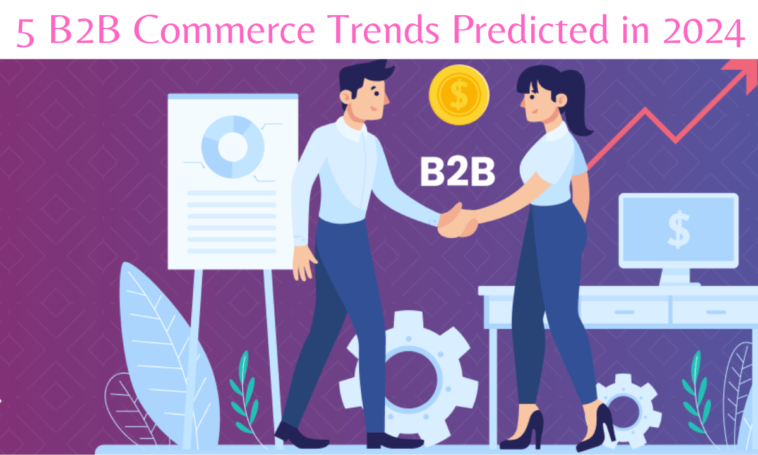B2B organizations expect upwards of 50% of their revenues to come from digital channels over the next 2 years. That’s a significant increase from last year when 29% of B2B revenue came from digital channels. What strategies are companies adopting to align themselves with this new paradigm and boost revenue in a primarily digital landscape? Salesforce surveyed close to 2,700 business leaders to understand how they intend to negotiate evolving customer behavior, high expectations, and the emergence of new technology such as generative AI.
Here’s what the Salesforce survey revealed about emerging B2B commerce trends.
More and more B2B organizations will capitalize on headless commerce
Agility. Customizability. Flexibility. Every B2B organization could do with more of these. The inherent challenges involved in dealing with huge complex catalogs with diverse pricing models make it difficult to initiate new channels for customer engagement, personalize purchase journeys, and add new capabilities to the technology infrastructure quickly.
Thankfully, headless commerce and dynamic functionality make it a lot easier to ramp up these capabilities. How exactly? Headless splits up the front and back end of an e-commerce system and provides the freedom to build and deploy whatever they want. At a time when two out of three B2B buyers say they are aware that current buying experiences can be significantly enhanced, headless commerce offers a promising way forward.
With traditional solution architecture, development cycles were slow, and it could take businesses several months to launch new commerce experiences. Engineering teams would spend sleepless nights configuring and customizing the front-end and back-end systems every time some new functionality was needed. With headless, businesses get the flexibility and freedom to quickly innovate and optimize buying experiences.
With headless commerce, businesses can configure, price, and quote every product on every channel.
AI will improve productivity
The Salesforce survey indicated that close to 45% of B2B companies are already experimenting with AI, and one out of three have fully implemented it. Businesses are witnessing drastic improvements in internal productivity and overall business efficiency. With generative AI and automation tools such as Chatbot for Salesforce, tasks that previously took days or even weeks to be completed now take just a few minutes.
AI also has immense potential to significantly facilitate B2B digital transformation, something that was earlier a big challenge. For instance, large amounts of incomplete product data such as product descriptions, product multimedia, and configurations, have conventionally consumed a high volume of time and resources for cleaning up and ongoing management. And then there are costs for localizing product data for different geographies. Considering that almost two-thirds (65%) of B2B companies sell internationally, it’s vital for businesses to improve efficiency when it comes to product catalog management. Enter AI.
AI can significantly reduce the time and effort required for these tasks. With generative AI, businesses can digitally present their product catalogs, and can even curate visual buying experiences. Let’s look at a hypothetical scenario. A field technician is servicing agricultural equipment, empowered by AI. With technologies such as computer vision, it would be possible to find a replacement part by providing a visual 3D picture, drastically shortening the service cycle. Even customers can leverage the same technology to self-diagnose issues and automate the fix on their own. With the arrival of AI, this, and many more such use cases are within reach.
AI can also assist salespeople and marketers to curate personalized, messaging and promotional content for each individual buyer based on purchase history, cadence of orders, preferences, and more. This gives your sales and marketing teams plenty of free time to invest their time and energy on more creative tasks that directly impact your bottom line. Commerce professionals indicate that AI saves them an estimated 6.4 hours per week.
Data management will become a top priority
Data is the backbone of effective and accurate AI, and B2B organizations must prioritize the improvement of data quality if they want to unlock the true potential of AI. And by no means this is an easy task – 2 out of 3 B2B organizations say inadequate data integration and harmonization are keeping them from adopting AI. But it’s well worth the effort. Business leaders list data accuracy as a significant tactical advantage.
So how does one go about getting their data in shape? The first task is to do an audit to establish its accuracy, completeness, consistency, and relevance. A robust data management platform such as Salesforce can help you to unify and harmonize your data giving you the leverage you need to deliver stunning buying experiences. With a platform like Salesforce, you can get access to a 360-degree view of your customers – their profile, their buying behavior, and business activity so your teams have an accurate view of information and can collaborate to close deals faster.
When you connect a commerce platform with a customer data platform, you get access to real-time insights on your B2B buyers enabling you to interact with them in personalized ways that demonstrate you understand their needs and preferences. At a time when 85% of B2B buyers say customer experiences should exceed expectations considering all the humongous amounts of data companies collate, this is more important than it has ever been.
Accurate, harmonized, real-time, data is a priceless asset for B2B organizations, especially in the AI era.
Embedded commerce to initiate digital transformation
Complex buying processes can be a deterrent for business buyers. To enhance the buying experience, the sales cycle must be shortened to boost revenue; many businesses have now embedded transaction functionality across multiple touchpoints in the sales, marketing, and service journeys. This is referred to as embedded commerce and it has a significant impact on the top line. In fact, Salesforce says that B2B companies have seen almost half (46%) of their overall transactions occurring via embedded commerce capabilities. Here’s how businesses are using embedded commerce to drive sales
With over 100 man years of experience in Salesforce consulting spanning a decade, we have been helping businesses drive customer conversations at scale by leveraging 100% native Salesforce technologies. To know more about how our Salesforce consulting services can help power omnichannel conversational AI for your business, connect with our AI expert today.
This post was created with our nice and easy submission form. Create your post!





